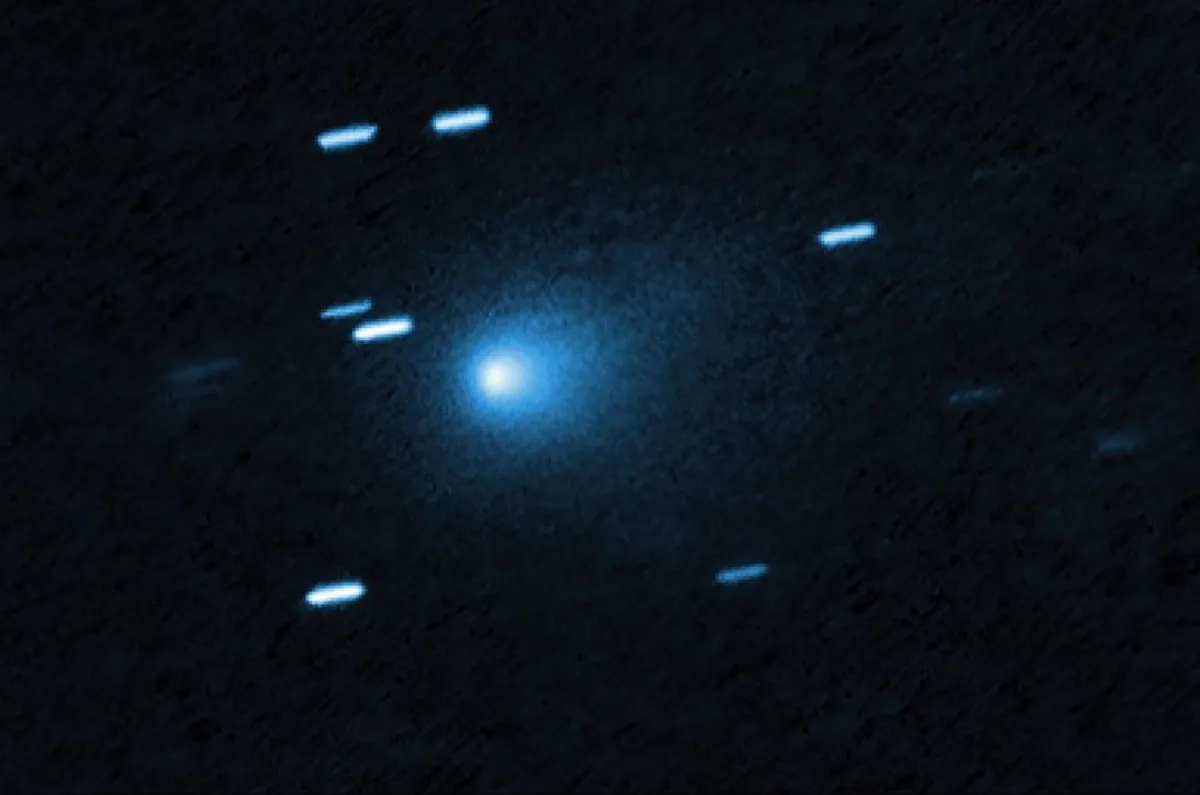
A rare interstellar comet, Comet 3I/ATLAS, is set to reach its closest point to the sun on Wednesday and Thursday, creating a buzz among astronomers worldwide. This remarkable celestial body is the third confirmed interstellar object to traverse our solar system, having traveled billions of miles through various star systems. Its orbit is characterized as strongly hyperbolic, indicating it has sufficient velocity to evade the sun's gravitational influence.
The designation 3I refers to its status as the third interstellar object, following 2I/Borisov in 2019 and 1I/'Oumuamua in 2017. First detected in July 2025 during a routine sky survey conducted by the Asteroid Terrestrial-impact Last Alert System (ATLAS), the comet's discovery is significant for scientists. These interstellar objects provide a unique opportunity to analyze material from distant star systems, enabling comparisons with our own solar environment.
As described by Space.com, interstellar objects act as cosmic time capsules, delivering samples from far-off exoplanetary systems that are otherwise unreachable. The identification of 3I/ATLAS heralds a new frontier in astrophysical research. However, this chance is fleeting; upon its discovery, the comet was racing through our solar system at approximately 130,000 miles per hour—the highest speed recorded for a visitor to our solar system, according to NASA. As it approaches the sun, its speed is expected to increase before it exits our solar system and continues its journey through interstellar space.
Shortly after its identification, NASA's Hubble Space Telescope collected data that helped astronomers assess the size and composition of 3I/ATLAS. The comet features a solid, icy nucleus estimated to be between 1,000 feet and 3.5 miles in diameter. David Jewitt, a scientist from the University of California and team leader for the Hubble observations, highlighted the challenges of drawing conclusive insights about the comet due to its transient nature.
Jewitt remarked, "No one knows where the comet came from. It’s like glimpsing a rifle bullet for a thousandth of a second. You can't project that back with any accuracy to figure out where it started on its path." The comet's chemical composition suggests it originated in a cold, distant region of its parent star system, under conditions vastly different from those found in our solar system. Experts estimate that 3I/ATLAS is likely very ancient, potentially between three and 14 billion years old, compared to our solar system's age of approximately 4.6 billion years.
Nasa predicts that the comet will make its closest approach to the sun at a distance of around 130 million miles on October 30, which is significantly farther than Earth's average distance of 93 million miles from the sun.
For those wondering, "Can I see Comet 3I/ATLAS?" the answer is currently no. The comet is not visible to the naked eye and cannot be captured using a telescope at this time, as it is situated on the opposite side of the sun from Earth. However, this situation is expected to change in mid-to-late November, when 3I/ATLAS moves away from the sun's glare. By early December, the interstellar object should become observable through telescopes, with its closest approach to Earth occurring around December 19, when it will be approximately 167 million miles away. Fortunately, experts have determined that its trajectory poses no threat to our planet.
Speculation surrounding 3I/ATLAS has led to theories suggesting that it may not be a comet at all. Harvard professor Avi Loeb and his colleagues proposed in a July paper that the object could be some form of hostile alien technology. Their hypothesis was partially based on the comet's unusual characteristics, including its hyperbolic trajectory and peculiar chemical makeup.
However, many experts and organizations, including NASA, have expressed skepticism regarding Loeb's claims. Tom Statler, a NASA lead scientist, stated, "It looks like a comet. It does comet things. It very, very strongly resembles, in just about every way, the comets that we know." Despite some intriguing properties that differ from typical solar system comets, the overwhelming evidence supports the conclusion that 3I/ATLAS is a natural celestial body.
This is not the first instance of Loeb proposing extraterrestrial connections; he previously suggested similar theories regarding 1I/'Oumuamua, the first interstellar object detected in our solar system, which has since been debunked by leading astrophysics programs, including those at the University of Hawaii.